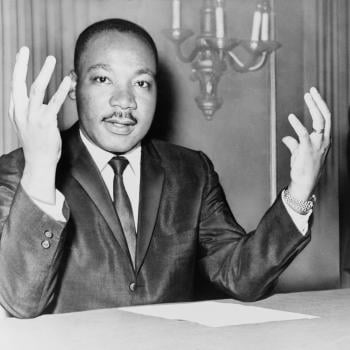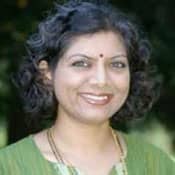The Detroit Institute of Arts, the Musée du Louvre, and the Philadelphia Museum of Art have organized an exhibit titled Rembrandt and the Face of Jesus. In Michigan through mid-February 2012, this show brings together, for the first time since the 1600s, many of Dutch master Rembrandt van Rijn's finest paintings, prints, and drawings that portray Jesus and events described in the Bible. The sixty-four works on exhibit include approximately fifty-two small, intimate paintings, prints, and drawings by Rembrandt and his students that illustrate how Rembrandt broke from traditional 17th-century representations of Jesus as a European, often blue-eyed and blonde-haired.
The exhibit, which I saw on opening day, focuses on how Rembrandt painted Jesus. It guides the viewer through Rembrandt's Amsterdam, and how Rembrandt and his students created images of Jesus that were humble, real—and Jewish. The environment that enabled Rembrandt's imagination is explained through representation of Amsterdam, its economic prosperity (the first international Stock Exchange was established by the Dutch East India Company there), and the Sephardic Jewish immigrant quarter where Rembrandt lived and had a studio.
Quotations exemplifying the pluralism of the times grace the walls: from Dutch historian and theologian Caspar Barlaeus, "We believe that piety is not the privilege of just one century or of just one nation," to Rabbi Isaac Uziel, who wrote in 1616 ". . . people live peaceably in Amsterdam. The inhabitants of this city, mindful of the increase in population, make laws and ordinances whereby the freedom of religions may be upheld . . ." Of course, this was also when the Dutch engaged in slave trade and actively participated in what we now recognize as the violence of conversion, and the religious tolerance they promoted was primarily to encourage economic prosperity.
Rembrandt's illustration of biblical stories are displayed beside excerpts from the Calvinist State Bible, with indications that he took the freedom to interpret the Bible for himself (he was not officially affiliated with the Church), and one can see that he makes Jesus at once human and divine. As Lloyd DeWitt, Associate Curator, Philadelphia Museum of Art, writes of Rembrandt, his work shows that he is able "to find common ground, common faith and common humanity with his neighbors." I wrote about this in an earlier column; establishing relationships across faiths helps build understanding.
Through my peripheral involvement with the InterFaith Leadership Council of Metropolitan Detroit, I helped with interpretation of the exhibit. IFLC is a faith-based civic organization made up of "visionary religious and lay leaders of many faiths whose shared values compel them to work toward a community that lives together in harmony," but like a December 4 interfaith symposium on the Rembrandt exhibit, its Board currently consists of representatives from the three Abrahamic faiths. The symposium, titled "Religion, Community and the Arts: Breaking Barriers, Building Bridges," has a panel consisting of Episcopal minister Rev. Susan E. McGarry, with over three decades of experience; Prof. Saeed A. Khan, from the Department of Near East & Asian Studies at Wayne State University; and Prof. Howard Lupovitch, Waks Family Chair in Jewish History at the University of Western Ontario. The Jewish, Christian, and Muslim representatives will look at the person of Jesus and examine the cultural context of Rembrandt's time and discuss how their individual faiths view the figure of Jesus. The symposium is part of the IFLC goal to "promote interfaith education so that the metropolitan Detroit community can benefit from the synergies and creative benefits that knowledge and understanding can provide."
As in Rembrandt's times, today we in Michigan, the United States, and the world over, come into contact with increasing religious diversity. Unlike Rembrandt's Amsterdam, Michigan, the United States, and the world over, we live in not-so-prosperous times: according to most accounts, the gap between rich and poor is widening. But in a new report by the Pew Forum on Religion & Public Life, we are still able to spend nearly $400 million in the United States alone on religious advocacy, and the number of lobbying and advocacy organizations has tripled since the 1970s. Allen D. Hertzke , the report's key author and University of Oklahoma political science professor said in his 1988 book, Representing God in Washington, that Washington, D.C. is "a common ground where groups with different regional, ethnic, theological or ideological bases meet in close proximity. It is here that leaders develop strategies, coalitions form, issues are framed, bedfellows emerge, partisans mutually adjust and members are mobilized." The report spoke to me, as did Rembrandt's paintings of Jesus, a human enshrined in divinity.





